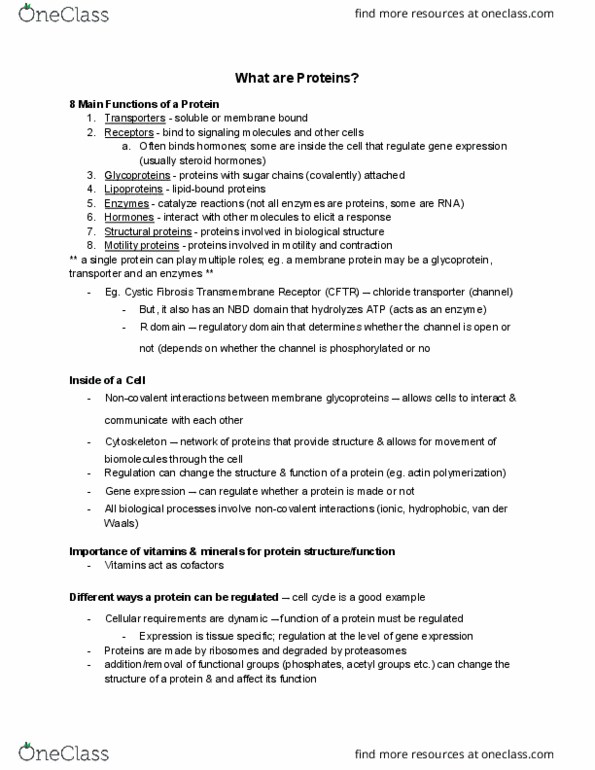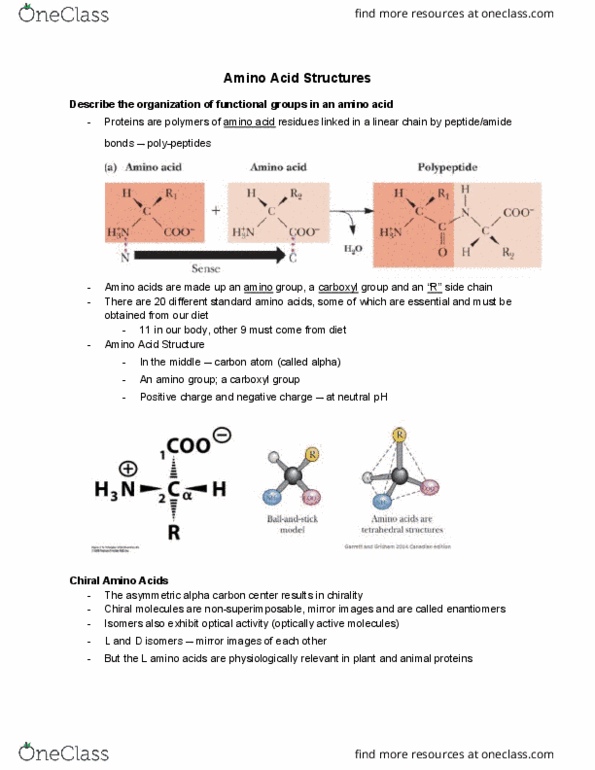BCH210H1 Lecture Notes - Lecture 4: Cystic Fibrosis, Membrane Protein, Glycoprotein
BCH210H1 verified notes
4/39View all
Document Summary
** a single protein can play multiple roles; eg. a membrane protein may be a glycoprotein, transporter and an enzymes ** Cystic fibrosis transmembrane receptor (cftr) chloride transporter (channel) But, it also has an nbd domain that hydrolyzes atp (acts as an enzyme) R domain regulatory domain that determines whether the channel is open or not (depends on whether the channel is phosphorylated or no. Non-covalent interactions between membrane glycoproteins allows cells to interact & communicate with each other. Cytoskeleton network of proteins that provide structure & allows for movement of biomolecules through the cell. Regulation can change the structure & function of a protein (eg. actin polymerization) Gene expression can regulate whether a protein is made or not. All biological processes involve non-covalent interactions (ionic, hydrophobic, van der. Importance of vitamins & minerals for protein structure/function. Different ways a protein can be regulated cell cycle is a good example.





